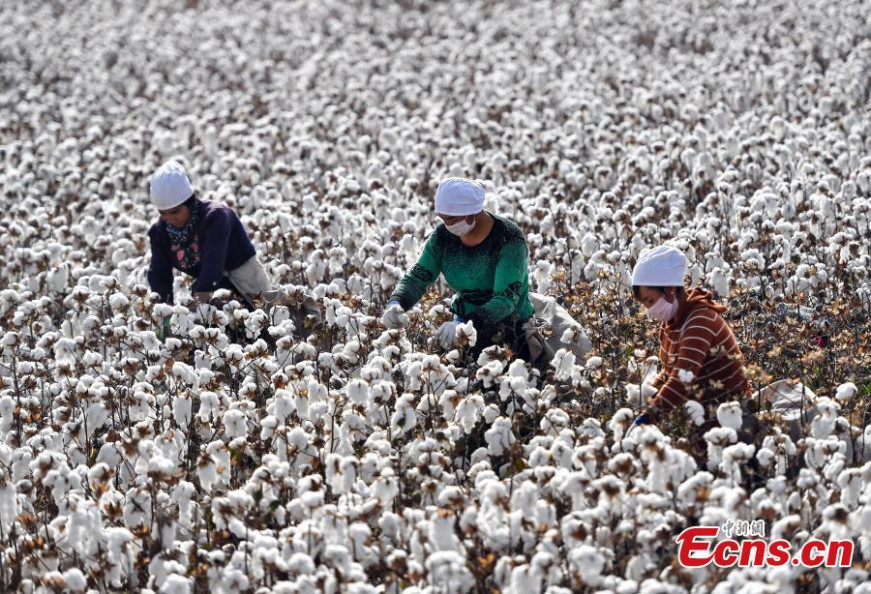Dive Brief:
- As many as 1 in 5 cotton garments in the world is likely to contain some fiber produced in the Xinjiang province of China, where the Chinese government is accused of holding Uighur Muslims in camps and forcing them to work, according to an analysis from GlobalData.
- Xinjiang produced 84% of China's total cotton output last year, according to China's National Bureau of Statistics. China has 22% share of global production, Leonie Barrie, Apparel Analyst at GlobalData wrote in an email explaining how the firm reached the estimate.
- This week the U.S. House of Representatives passed a bill to ban products made by Uighur labor with bipartisan support. The bill requires importers to provide "clear and convincing evidence" that goods sourced in Xinjiang were not made with forced labor. Since mid-June, Customs and Border Protection has issued five WROs, covering roughly $200 million in Chinese imports.
Dive Insight:
The ubiquity of Xinjiang cotton in finished garments brings into sharp focus the immense challenge of enforcing the legal bans related to the Uighur crisis that are making their ways through legislative bodies around the world — not to mention the challenge bans present to procurement and compliance officers.
Forced labor is already banned in the U.S. when it comes to imports, but the new legislation would put more responsibility on the importing companies to ensure their goods are not the product of it.
Part of the challenge of compliance with the new standard stems from the cotton production process. Turning raw cotton fiber into finished material requires the mixing of fibers from different farms for expediency and to achieve uniform quality, Barrie explained.
"Cotton from Xinjiang is extra-long staple length cotton, which means its silky long [fibers] are of the highest quality and particularly sought-after," she said.
In addition to the challenge of identifying regional sourcing even in the uppermost tiers of the cotton supply chain, Barrie said that most sourcing organizations can't get close in terms of supply chain visibility.
"It’s an uncomfortable truth that most brands and retailers have little visibility into their upstream supply chains," Barrie said. "Beyond their first-tier garment suppliers, it is very difficult to know where all the raw materials come from. It’s this that makes any US ban a real concern. They’re in the impossible position of being asked to monitor what they can’t measure."
The usual tools to deal with complex sourcing risks such as forced labor don't work in Xinjiang, because auditors can't get access to the production sites to speak to workers. Barrie suggested that forensic DNA analysis, used to trace the genetic code of the cotton plants, may be the only way to sift through this complex supply chain. But the technology isn't at the stage where it could support large-scale enforcement, she said.
"There are as yet no accurate tests to specifically identify or eliminate Xinjiang cotton," Barrie said.
The Uyghur Forced Labor Prevention Act goes to the U.S. Senate next, but the upcoming election makes it's future uncertain.
"Either way, the Xinjiang issue is not going to go away, so brands and retailers must brace for more scrutiny of their supply chains," Barrie said


